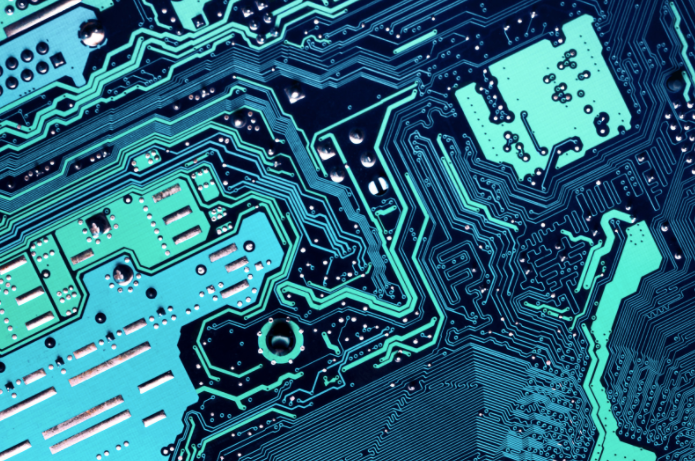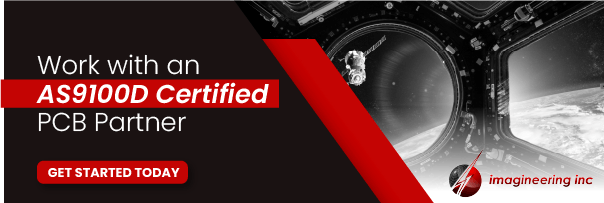Not all electronic devices are built equal – for products that require the utmost precision, Class 3 printed circuit board fabrication is essential.
Printed circuit board classification is determined by the quality and importance that a device has in our day-to-day lives. Consider the devices around your home. The most inconsequential electronics you have don’t need high performance or reliability – you don’t buy a toy for your kid expecting it to last throughout their lifetime, nor is it necessary as they will likely outgrow it.
Comparatively, you expect higher-quality devices, like your computer or your television, to be continuously functional. While malfunctions with these devices can have unfortunate consequences (nobody wants their microwave to stop working, or for your hard drive to malfunction and lose all of your files), these scenarios are rarely life-or-death situations. While intended for long-term use, the circuit boards inside of these machines balance quality with cost-efficiency to appeal to a mass consumer demographic.
A special classification exists for devices that have no margins for error – what we call IPC Class 3 Printed Circuit Boards. These machines can function continuously without error to perform the most vital functions in our society. This includes everything from the computers in commercial jets, military applications, space shuttles operating in high temperature environments, and precision medical equipment.
While the quality of Class 3 fabrication is undisputed, it is not required for all devices. But does your product need the best quality available on the market? In this blog, we examine the applications of each IPC Class, and determine key differences between Class 2 and Class 3 printed circuit boards, giving you the tools to decide which is right for you.
Class Definitions of Printed Circuit Boards
There are three general performance classifications currently being used in printed circuit board manufacturing. Each class is a set of standards monitored by the IPC under the IPC-6011 standard. The levels dictate not only the sophistication of the board, but their functionality, performance, and inspection frequency.
- Class 1 PCB – General electronic products. These circuit boards are generally used in simple electronics, such as a flashlights, toys, remote controls, and related products. They are considered to have the lowest quality, and have a short life cycle. While they aren’t particularly reliable over time, the devices they are contained in generally aren’t built to last, and can be easily replaced.
- Class 2 PCB – Service electronics. Class 2 printed circuit boards have a longer life cycle and are of better quality than their Class 1 counterparts. They encompass everything from microwaves, smartphones, laptop computers, televisions, air conditioners, and more. Class 2 PCBs have great functionality for devices that are intended to run continuously, but aren’t considered to have critical functionality
- Class 3 PCB – High reliability or harsh operating environment electronic products. Devices containing these circuit boards must be built with extreme precision and quality, and are intended to last for a very long time. Examples of electronics containing ICP Class 3 fabrication are medical devices and equipment used for aerospace and military applications.
The final performance class of a printed board assembly cannot be any greater than the performance class of a bare printed board. This means that while a Class 2 bare printed board can be used for Class 1 PCBs, it cannot be used in Class 3 fabrication.
Ultimately, the type of circuit boards used in products are determined by their end-user functionality. A cheap electronic toy, for instance, is not held to the same standards as a device that depends on seamless functionality, like an EKG or a military aircraft. Thus, different manufacturers often specialize in different classes of printed circuit boards due to the exacting standards required to create Class 3 printed circuit boards.
What Goes into Class 3 ICP Fabrication?
Class 3 fabrication standards are the top of the line when it comes to quality and precision. An important question to ask before settling on it is: does my product require it?
Because of the increase in costs and time, a good question to consider is what costs might be associated with recalls due to faulty products. Returning to our earlier example, a broken computer might lead to a frustrated customer who, at worst, takes their business elsewhere. Faulty medical supplies or aircraft computers have consequences that are far more dire in scope, and necessitate higher quality components.
In the aerospace industry, standards and best practices like the AS9100D certification exist around the development of aerospace component and materials manufacturers, including Class 3 printed circuit boards. While this certification is not required by law, they are considered to be a standard for the industry and essential for devices that have no margin for mistakes. Such certifications require numerous audits to ensure exacting quality, and focus on product safety, counterfeit parts prevention, minimizing human error.
To meet the rigorous standards of Class 3 Fabrication, special equipment and processes are required to assemble these printed circuit boards. While these offer the highest performance, they require specific guidelines that can add to production time and expenses.
What Class of Circuit Board Do I Need?
Does your project require a Class 3 printed circuit board, or will a Class 2 PCB suffice? To understand which classification is right for you, it is best to start by knowing a device’s end-functionality. While increased performance may be appealing for a product, the costs incurred may not justify the final product.
Below, we identify advantages for each type of circuit board, based on differences in design, manufacturing, and inspection.
Advantages of Class 2 Printed Circuit Boards
Design – Without the same specifications of a Class 3 PCB, Class 2 PCBs have a much simpler design that makes placement and routing of components much simpler. This leads to reduced costs across the board.
Manufacturing – Class 2 PCB assembly does not require the same amount of time or materials that Class 3 fabrication calls for. The required amount of barrel fill for through-hole leads is 50% for Class 2 PCBs, while that number is 75% for ICP Class 3 PCBs.
Inspection – Because Class 2 PCBs are not typically used harsh environments or scenarios requiring a high degree of functionality, inspection times are dramatically reduced. For instance, surface-mount components may be slightly placed off of the pad, resulting in a visual defect. While this doesn’t meaningfully change the performance, such a defect is not allowed in Class 3 PCBs.
Advantages of ICP Class 3 Printed Circuit Boards
Design – Class 3 PCBs have to meet much stricter standards in terms of specifications and tolerances. As a result, the added expense leads to much higher quality over a longer period of time. These machines are designed to keep people alive in medical applications, planes in the air in aerospace applications, and military equipment functional in the most extreme environments. With greater time spent designing these boards, users can expect seamless results over a long period of time.
Manufacturing – The process for fabricating Class 3 PCBs is much slower, producing flawless printed circuit boards at the expense of time. The process looks quite a bit different than what you can expect with Class 2 boards – installation and cleanliness are given a much higher priority.
Inspection – Rigorous inspection is required for every printed circuit board of this classification. Class 3 PCB inspection helps identify faults early in the production process.
Conclusion
Class 3 PCB fabrication ensures the highest degree of quality, reliability, and functionality. For some applications, it is a standard requirement that should be considered in every instance. In other cases, while it might appear beneficial, it can add undue costs that will directly impact your bottom line.
At Imagineering, we specialize in high-quality Class 2 and 3 printed circuit board fabrication. We always deliver top-quality results on time at a price that meets your budget and specifications. Contact us today for more information about our services, or request a quote here.


